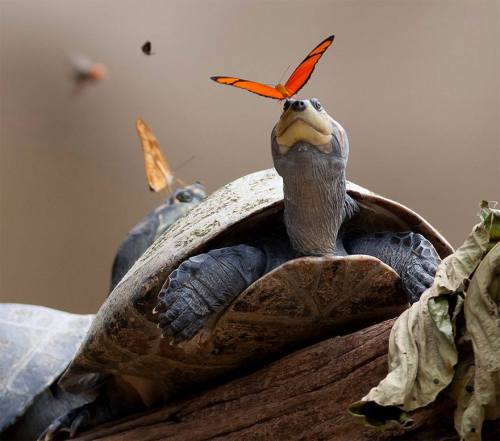A salty cocktailFor Amazonian herbivores, sodium is a tough mineral to come by. The Amazon rainfores
A salty cocktailFor Amazonian herbivores, sodium is a tough mineral to come by. The Amazon rainforest lies over 1,600 km (about 995 miles) from the major source of sodium that is the Atlantic Ocean, and is cut off from windblown particles by the Andes mountains. However sodium plays an integral role in animal physiology: regulating blood pressure, heart activity, and metabolism. It is also an important mineral for egg production. Carnivorous animals get an ample supply of sodium from their meaty diets, but plants are comparatively low in sodium. What’s a herbivore to do?!Amazonian butterflies have managed to find some solutions. From animal urine to muddy river banks, sweaty clothes to sweating people, they go to some lengths to source this essential mineral. But one of their more interesting sources are turtle tears, as seen in the image below.The butterflies uptake the salts in the tears using their coiled proboscis, however they take so little that they don’t seem to bother the turtles much. Bees have been observed trying the same thing, though their presence seems to annoy the turtles more - possibly in much the same way that buzzing insects in close proximity to our own faces makes us feel!Feeding on tears has its own special scientific name - lachryphagy (from lacrima, the Latin word for “tear”; and phagy, meaning “consumption of”). It has been observed in many insects, who usually feed off the tears of mammals (with turtles and caiman being the exception).VPReferences: http://bit.ly/1IM9e6K, http://bit.ly/1aS4T6TImages: Wikimedia Commons (http://bit.ly/1nC9T6w)Michael Wang (http://on.natgeo.com/1QLZSzv) -- source link
Tumblr Blog : the-earth-story.com
#butterfly#crocodile#turtle#lachryphagy#sodium#science#biology#evolution#amazon#reptile#amphibian#insect

